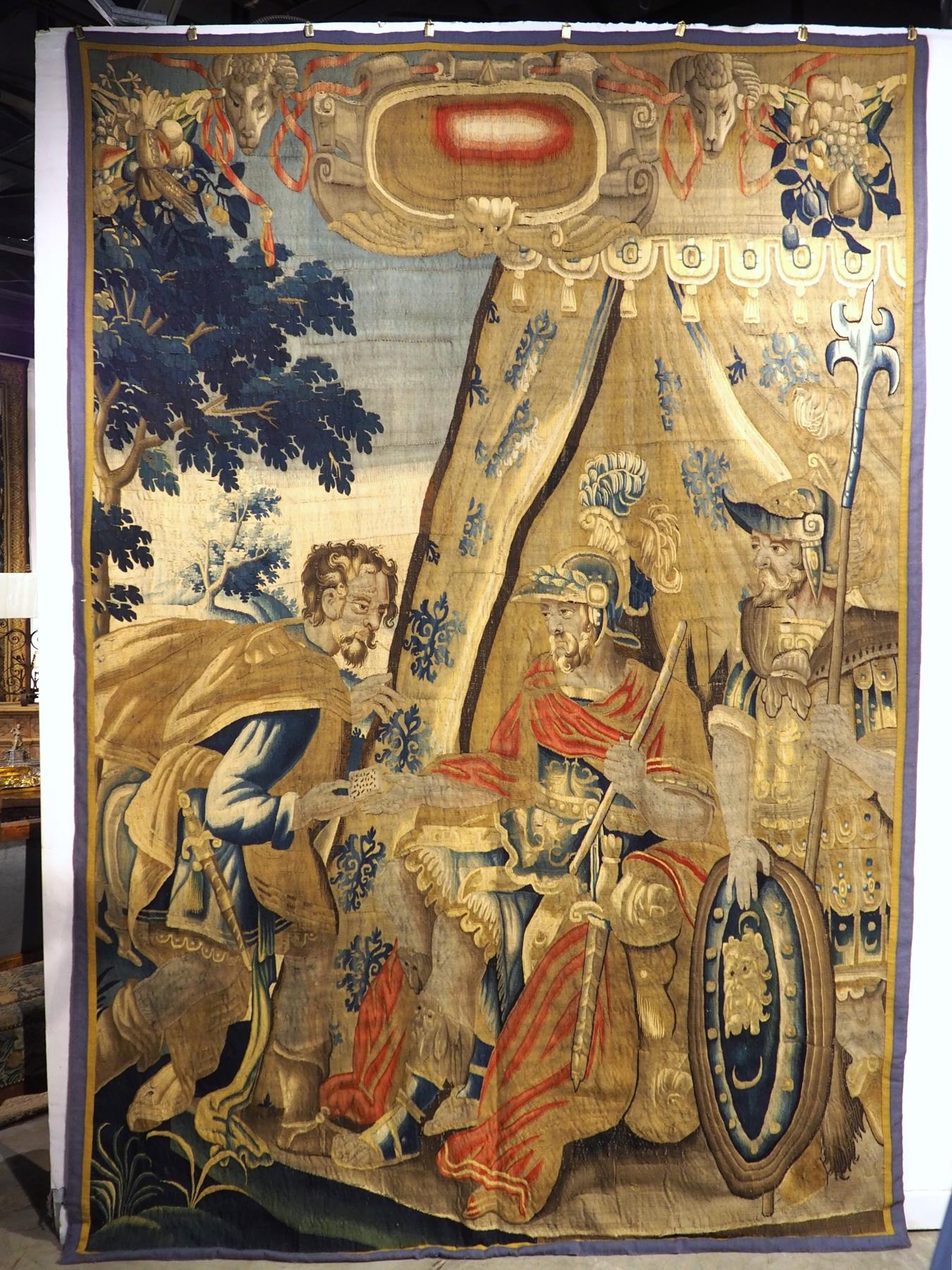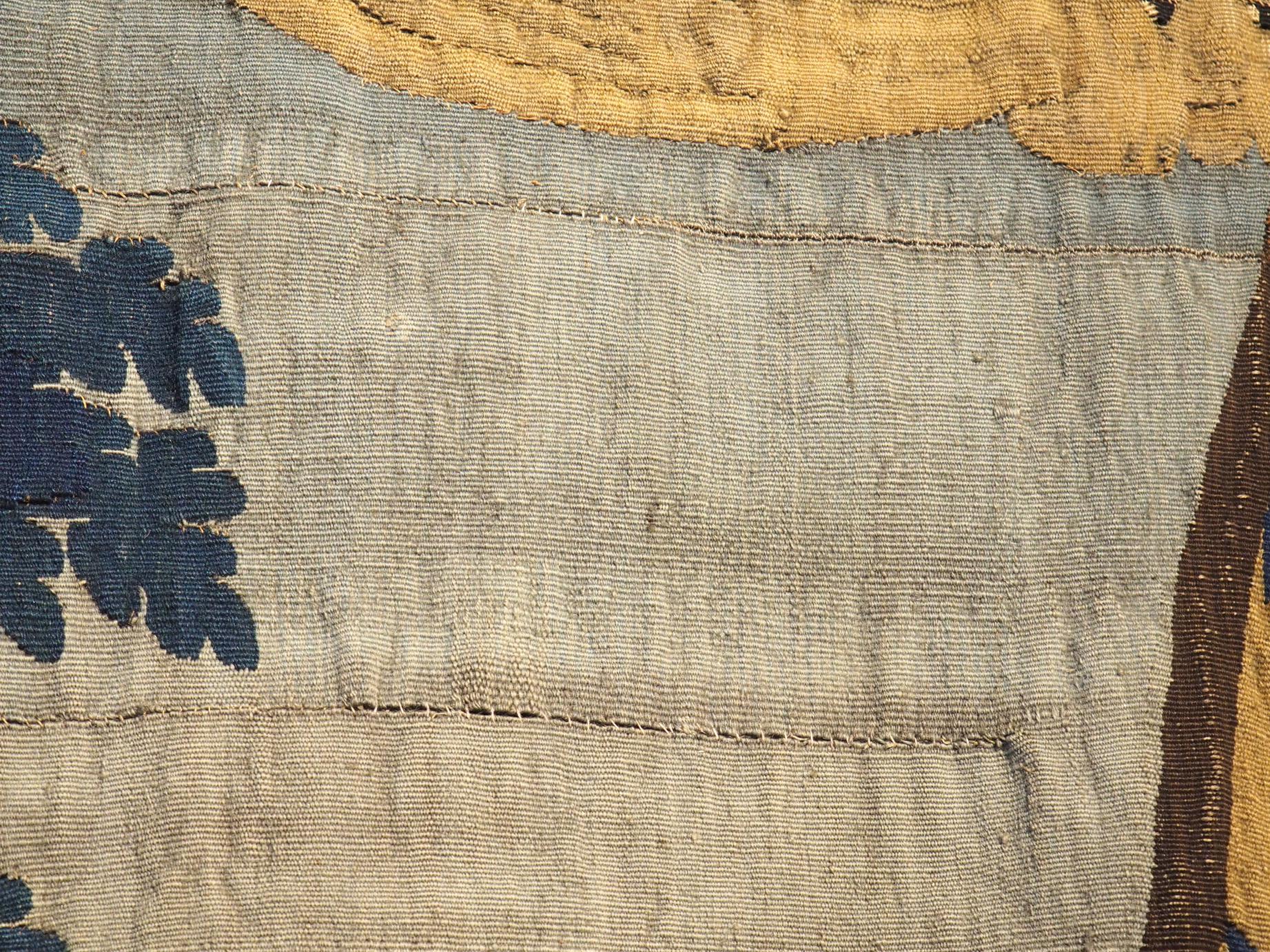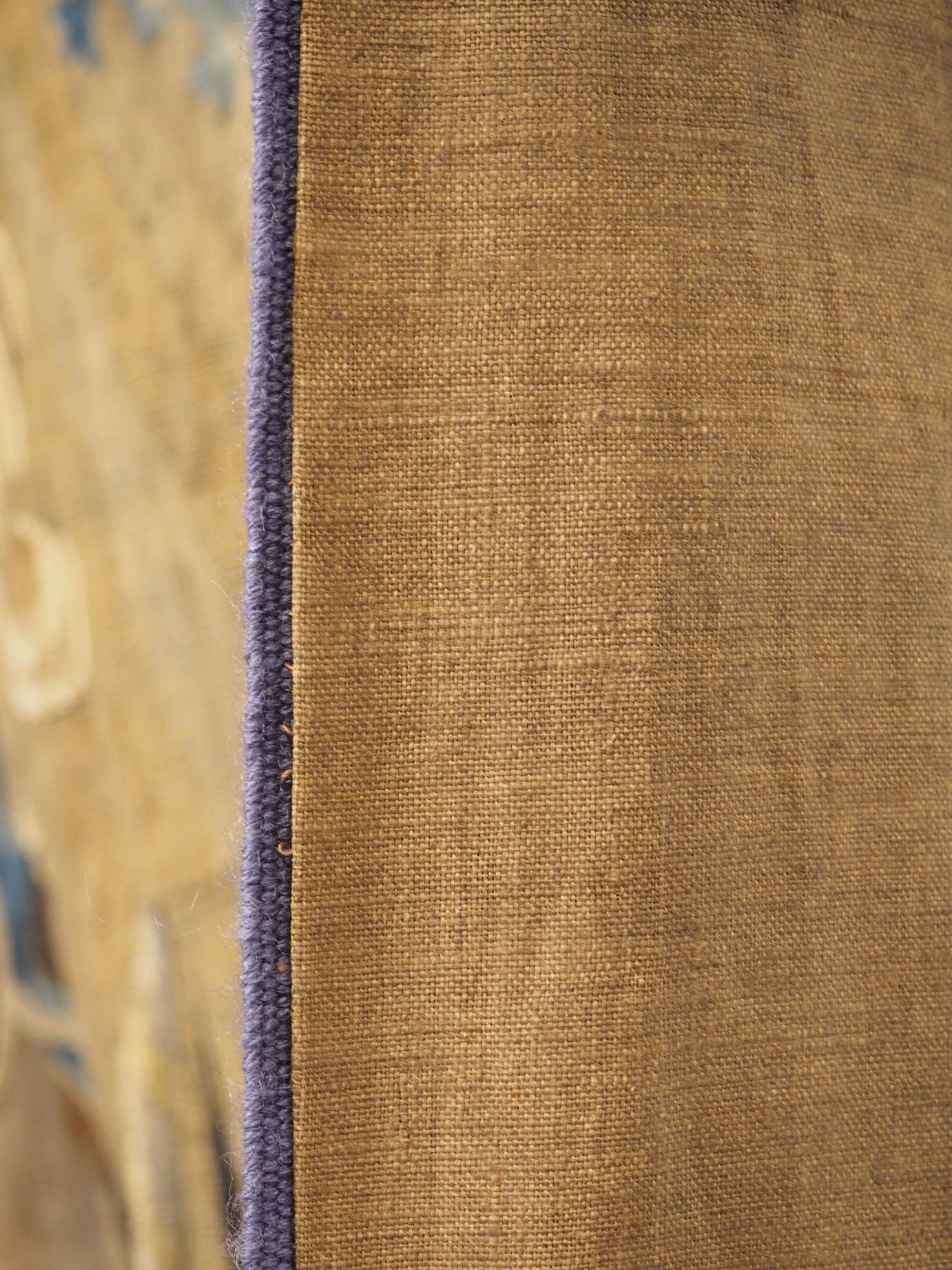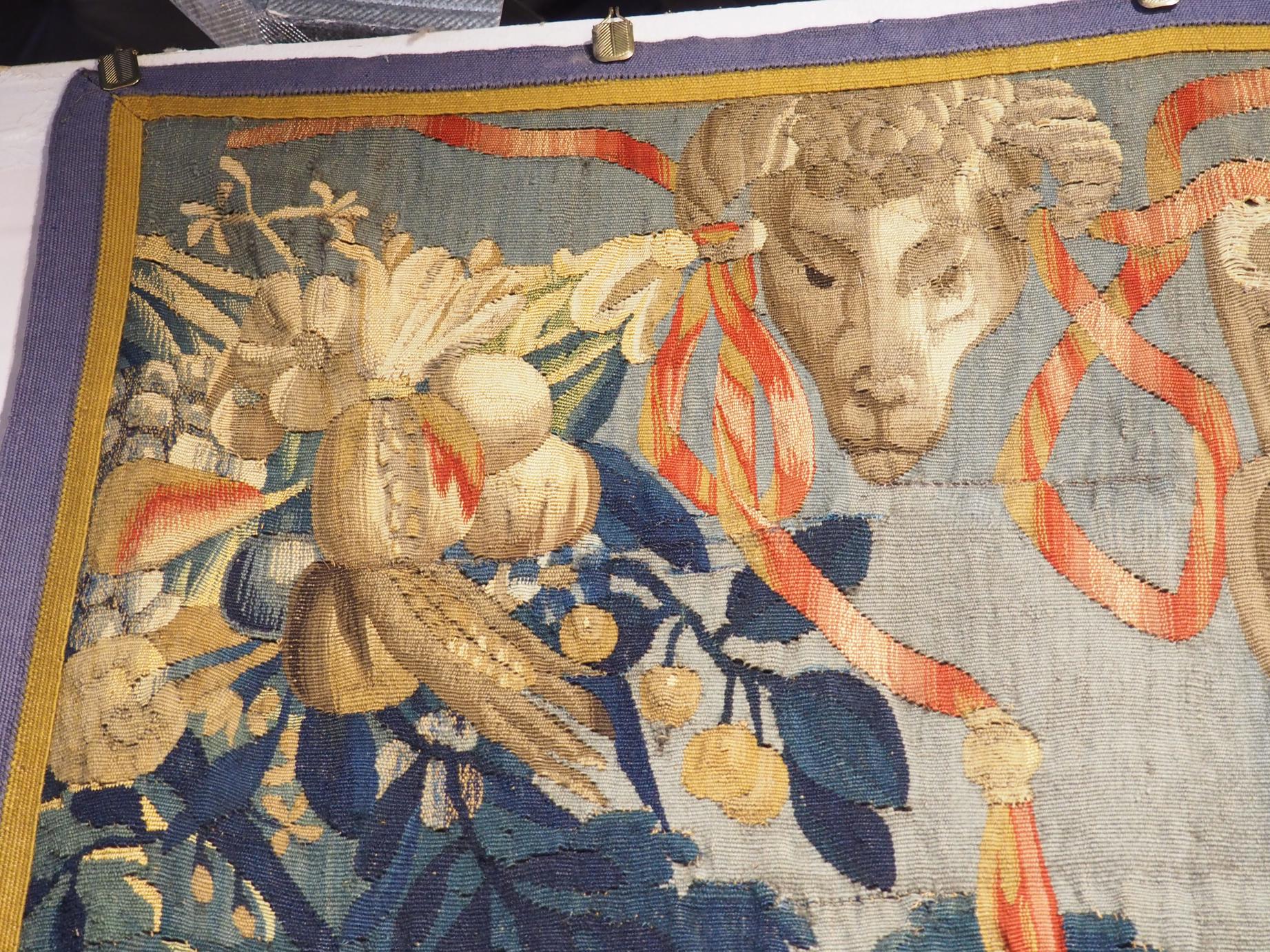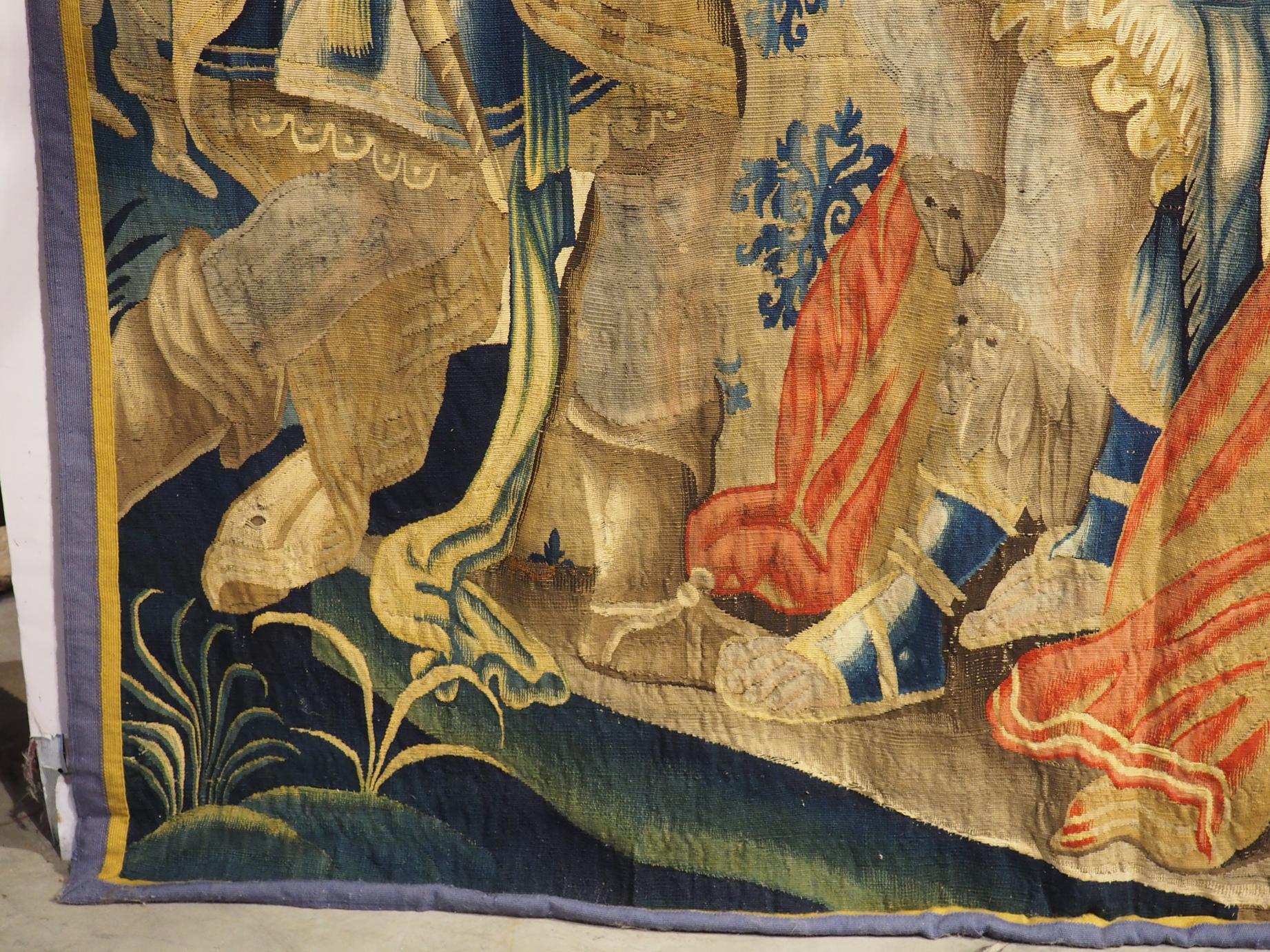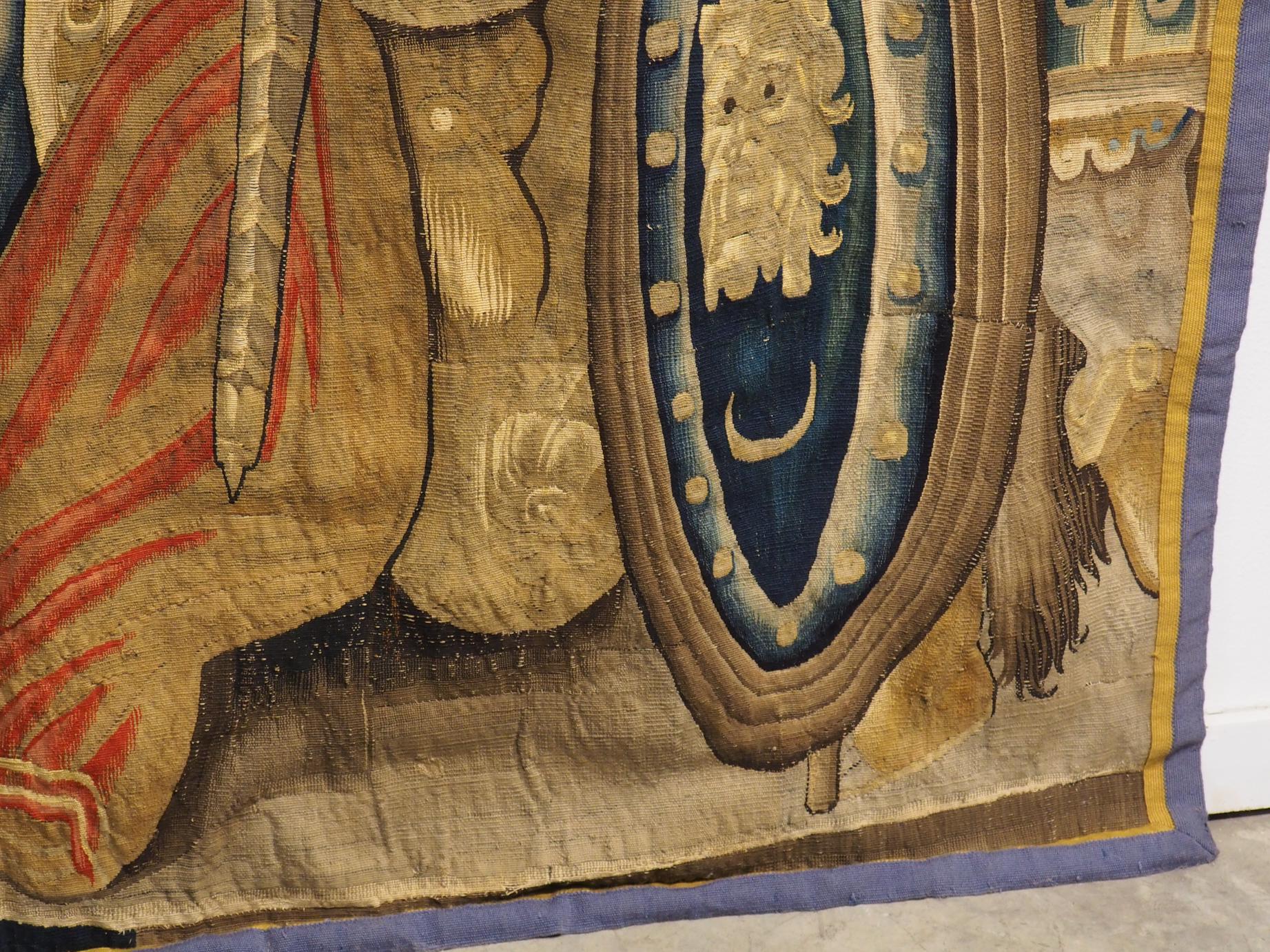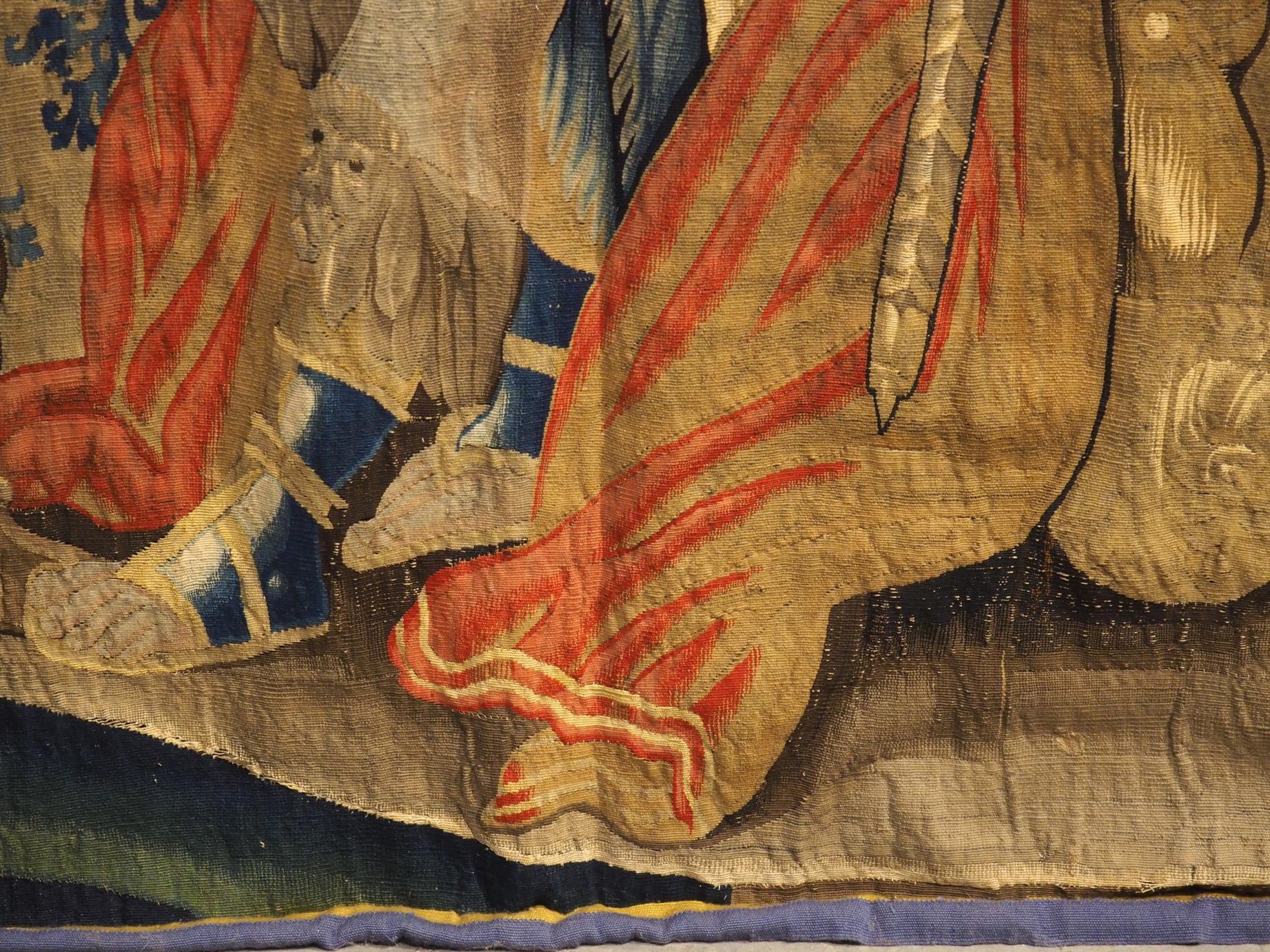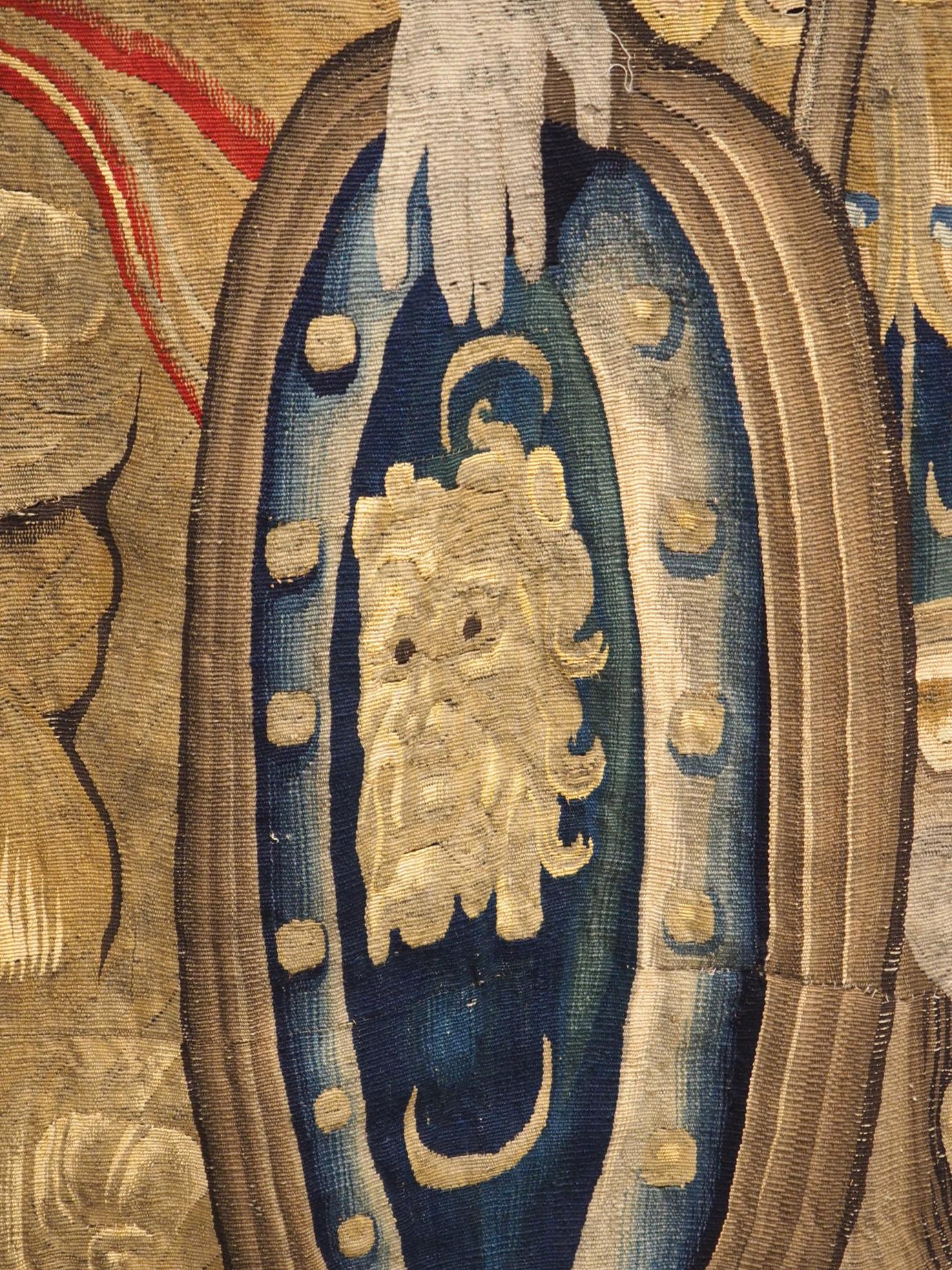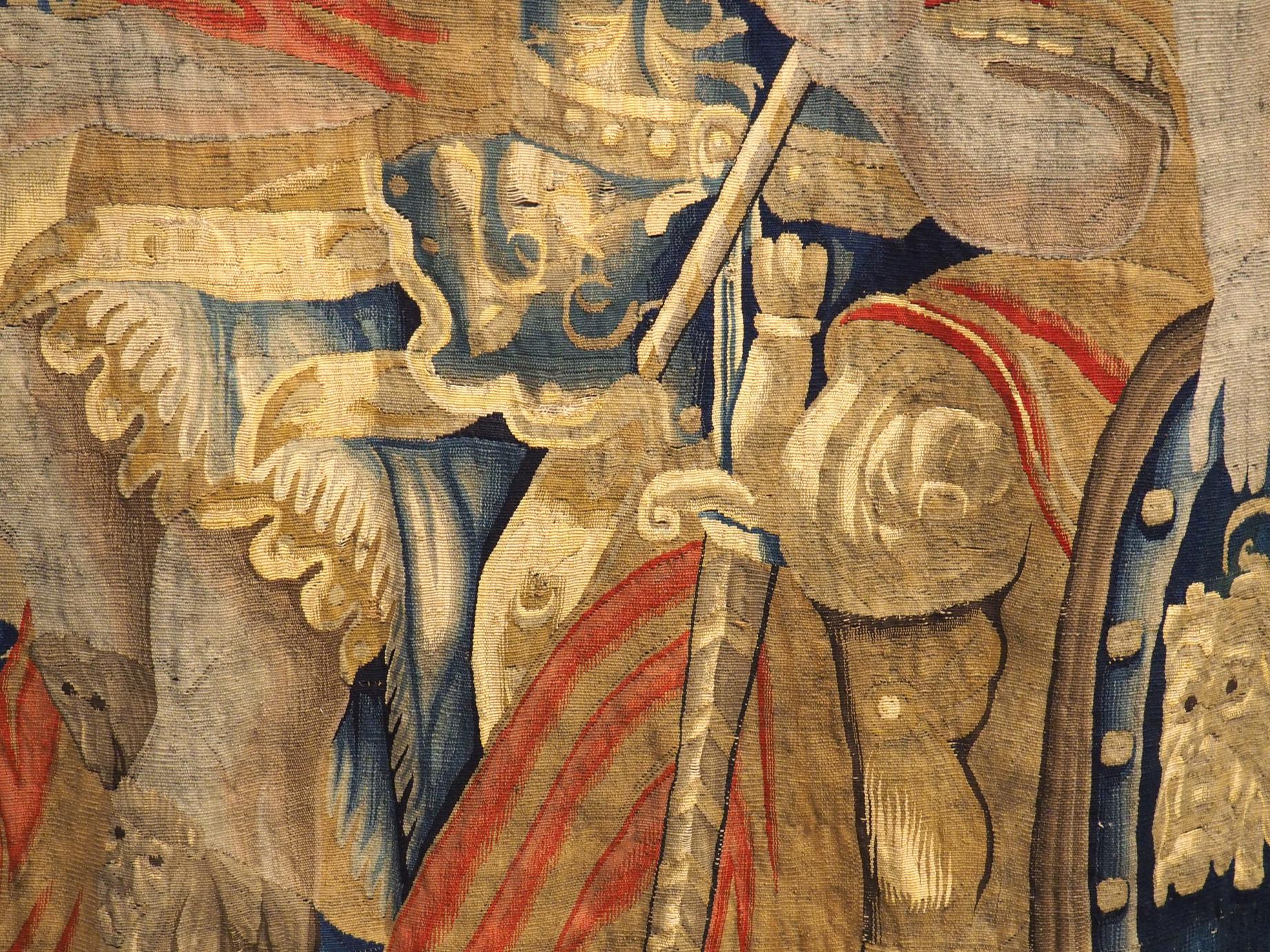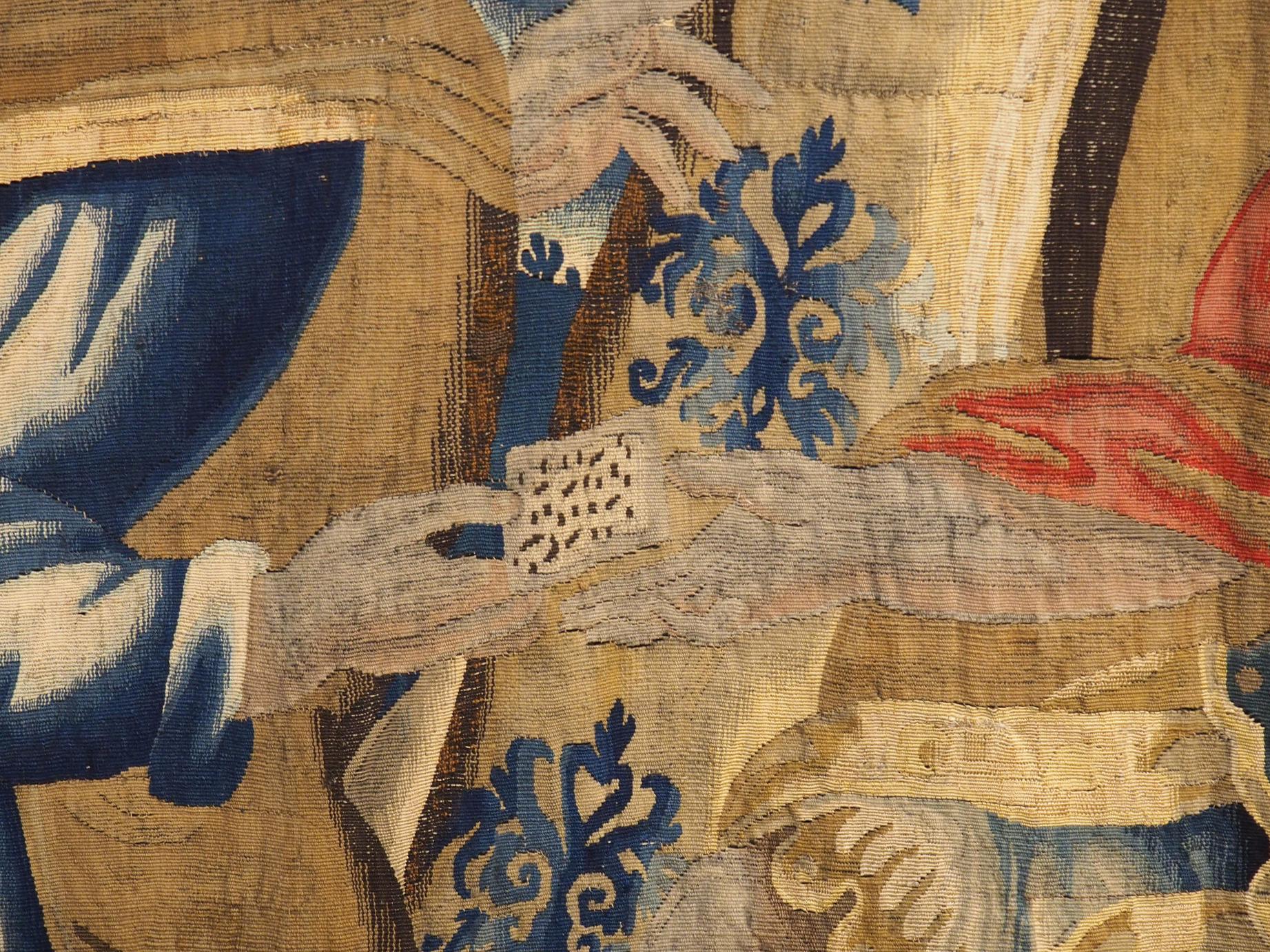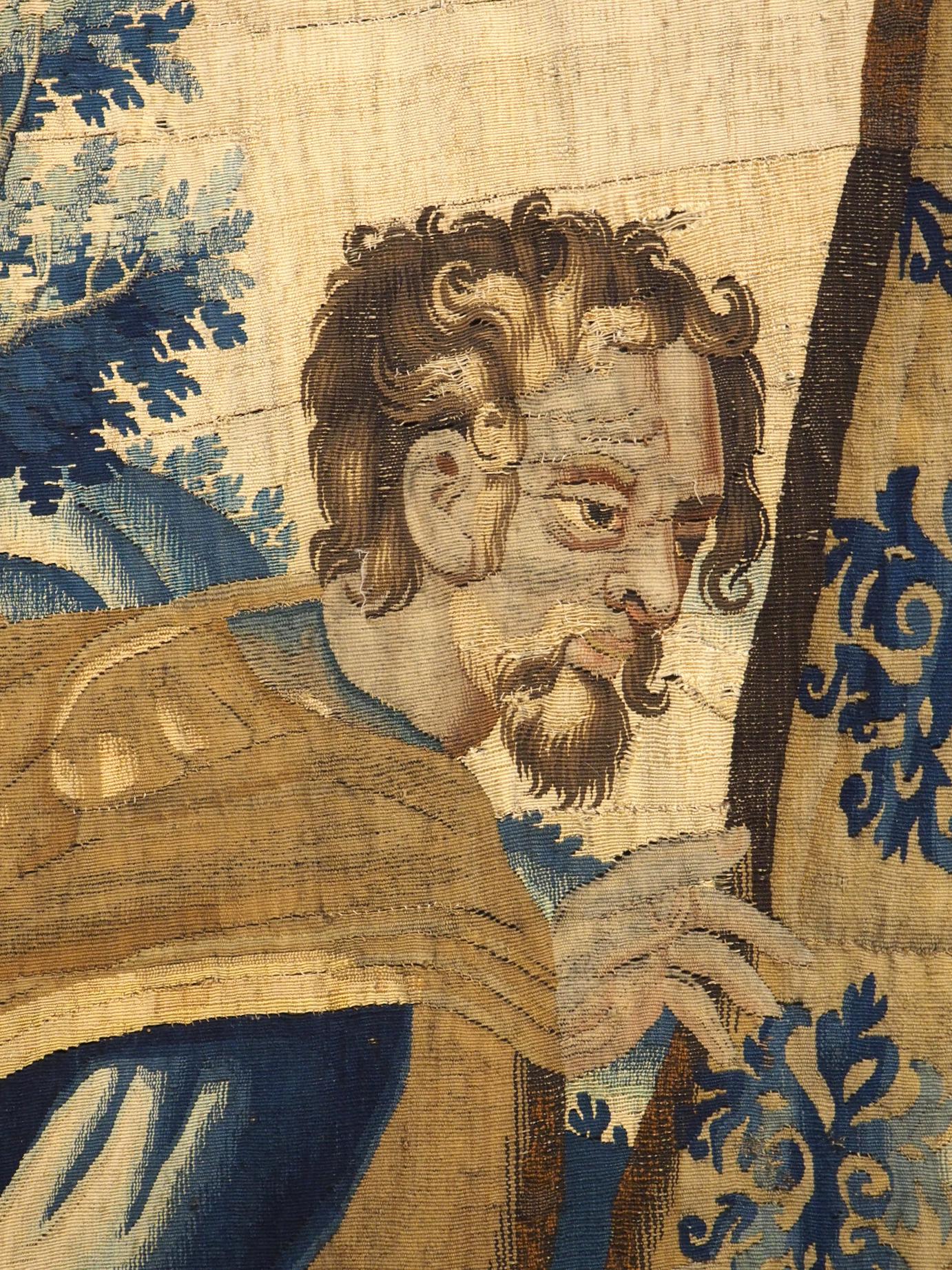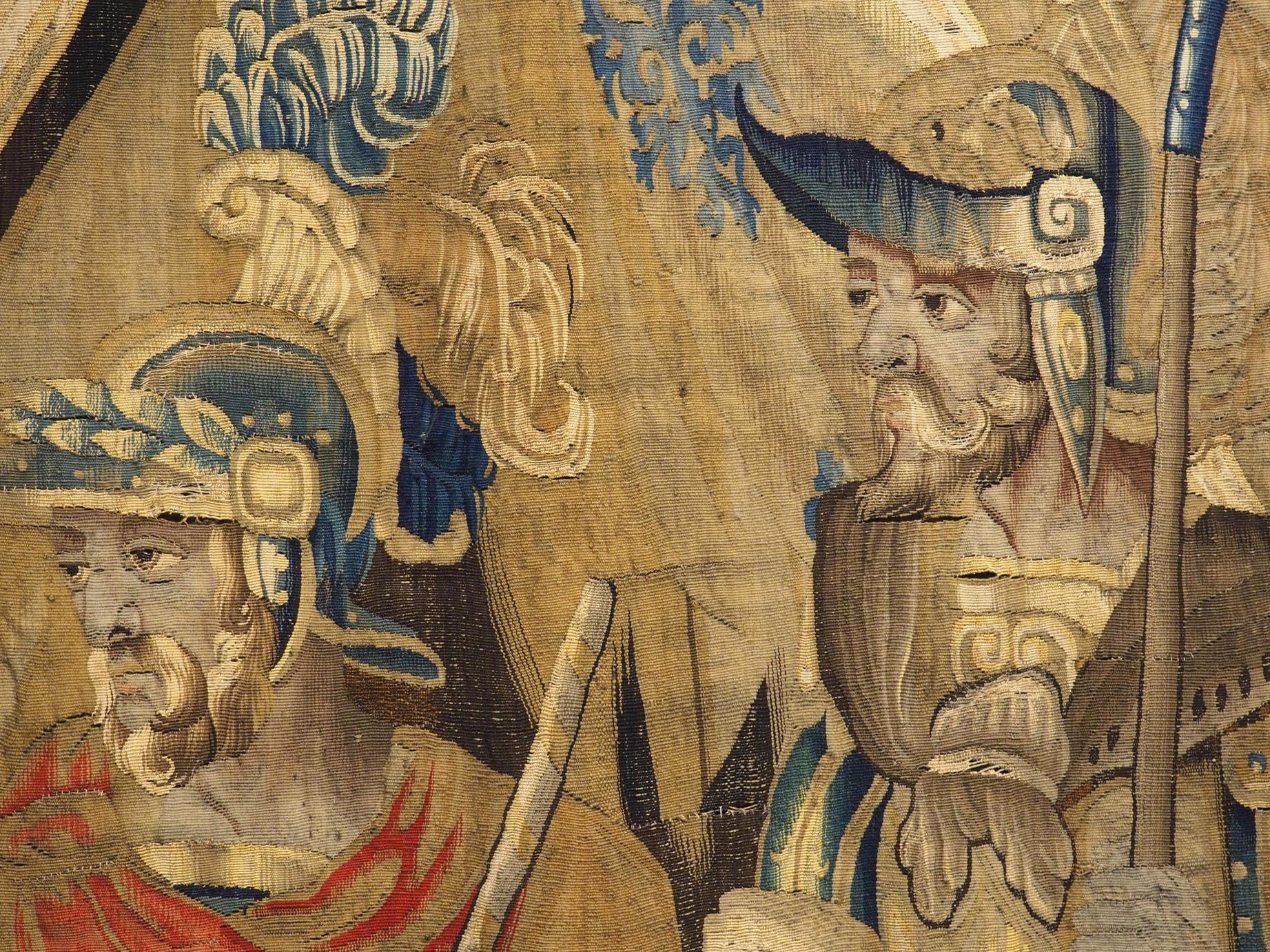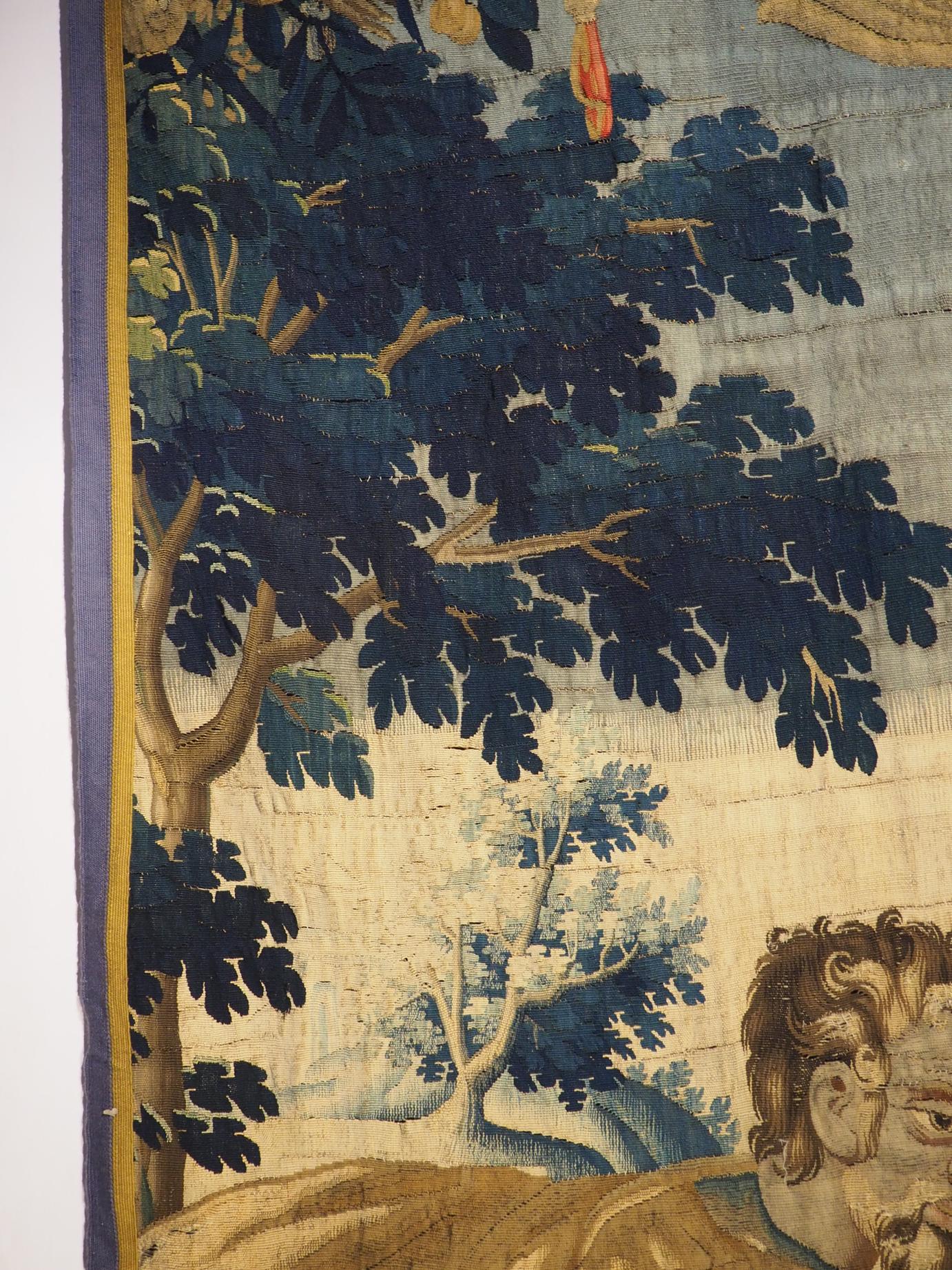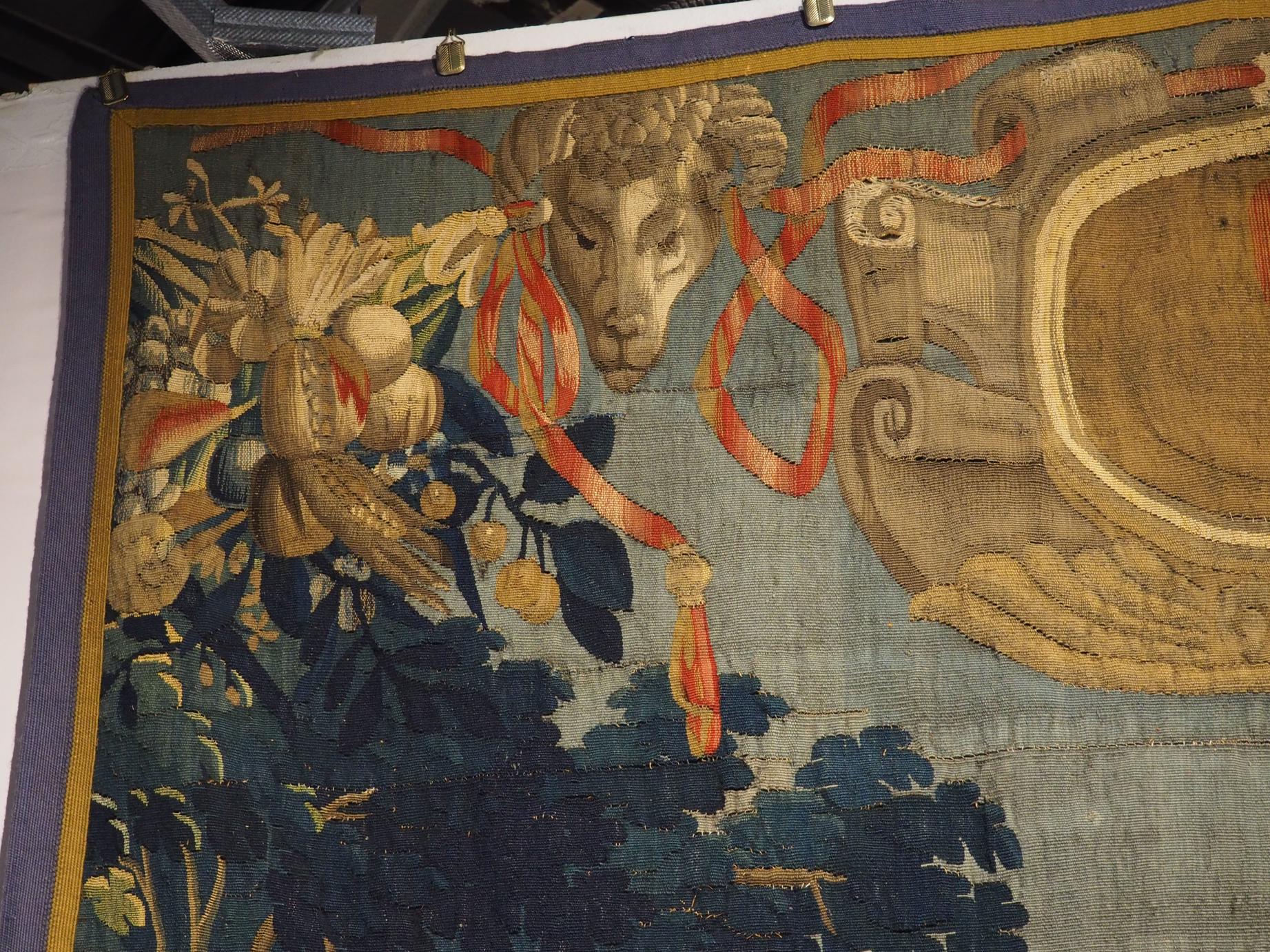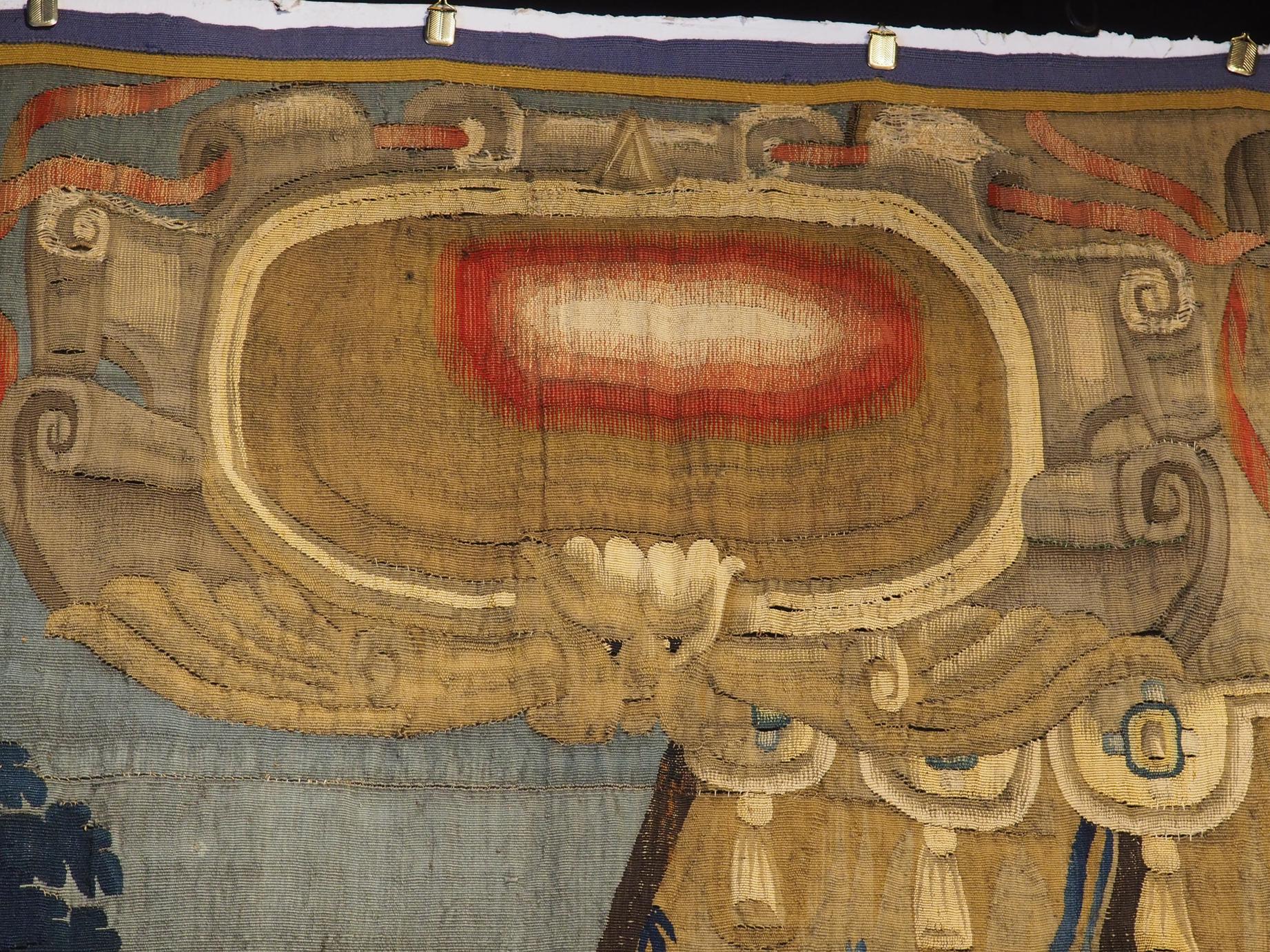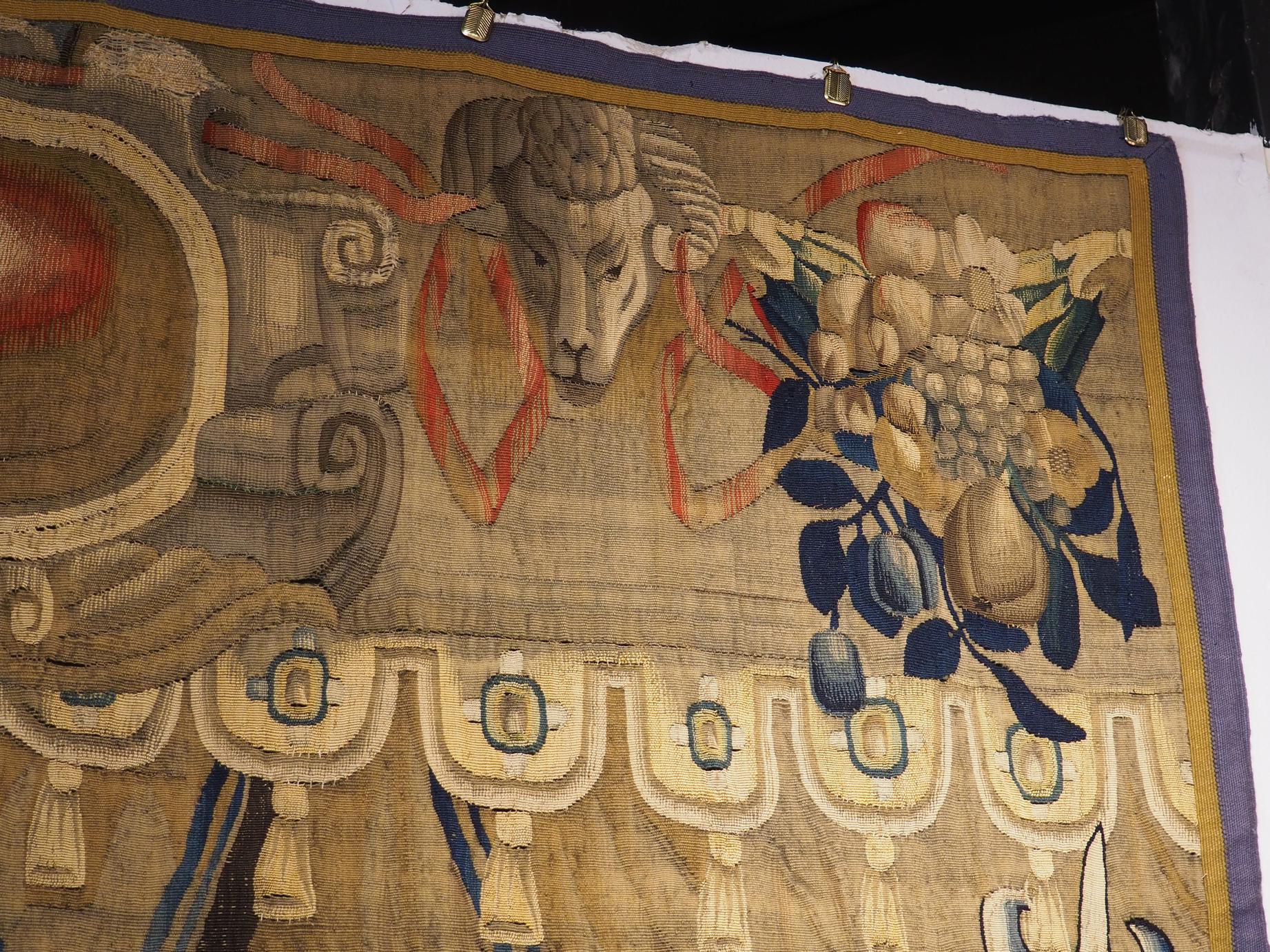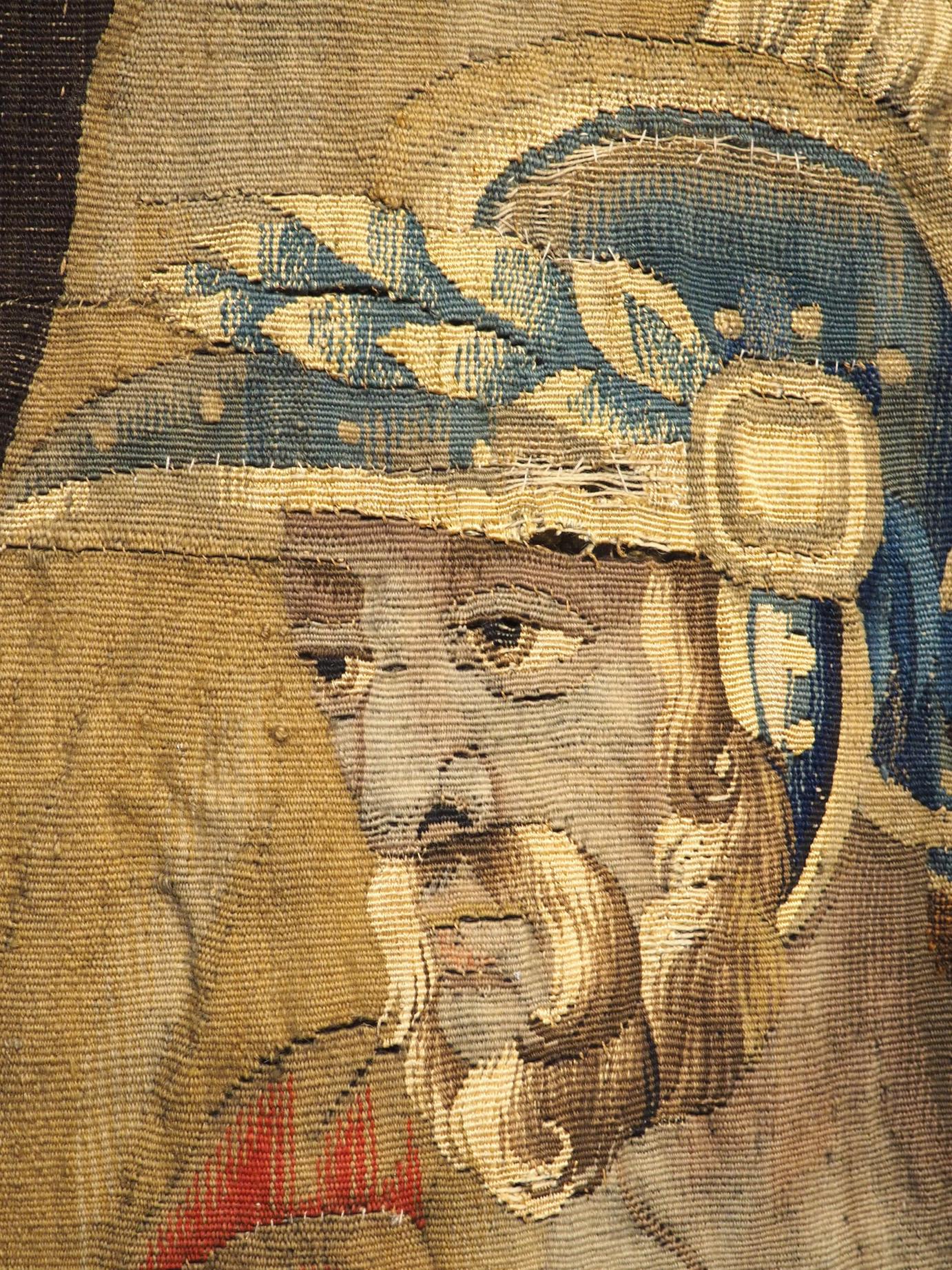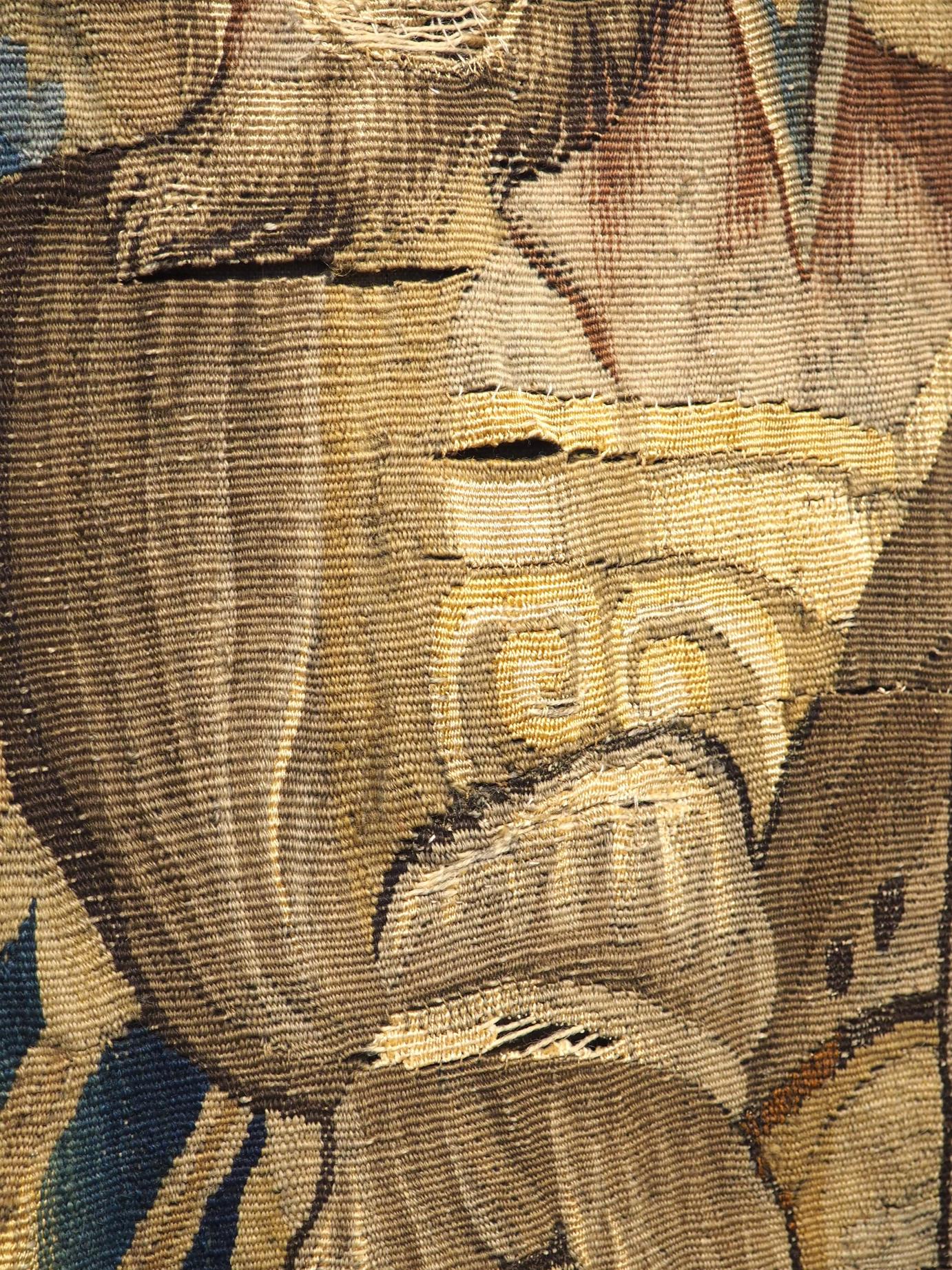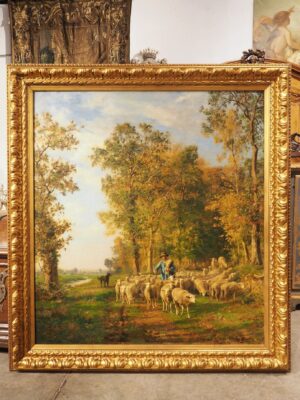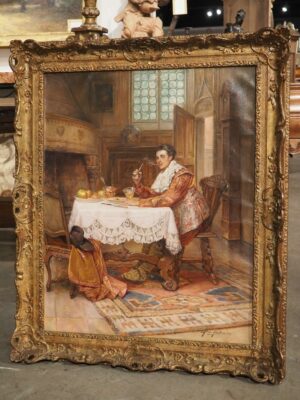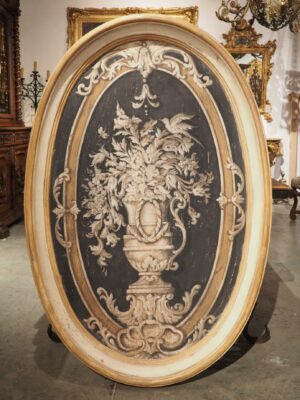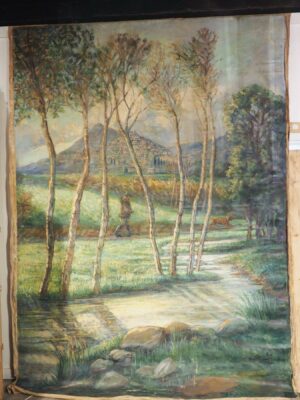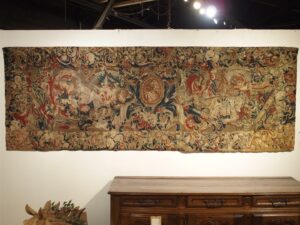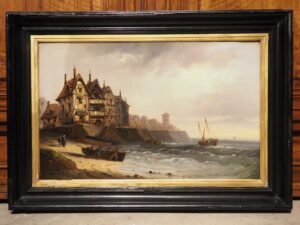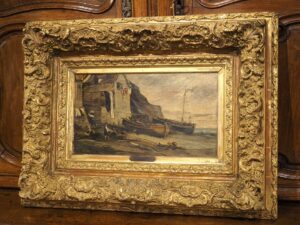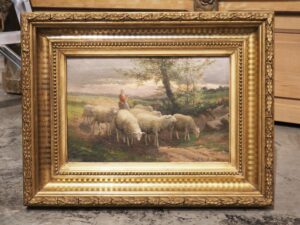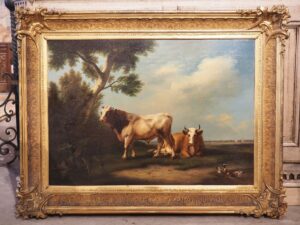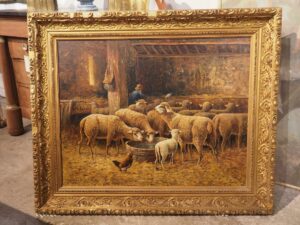Hand-woven in the 1600s in Brussels, Belgium, this silk and wool tapestry depicts a citizen paying homage to a Roman general. During the 17th century, Brussels tapestries were highly sought-after, as the region became somewhat of an epicenter for high quality tapestry workshops. Although the scene depicted here is of unusual subject matter, it shows resemblance to a series of tapestries woven after the works of Peter Paul Rubens, the famous Flemish (current-day Belgium) Baroque painter. In particular, there are similarities to the works featuring Roman consul Publius Decius Mus.
The large tapestry (over 10 feet tall and almost seven feet wide) features a seated Roman general dressed in a blue cuirass with golden embellishments and a long, red and gold tunic. His blue helmet is adorned with a voluminous feather of gold and blue. A similarly clad second soldier stands behind the seated legionnaire, although his vestments are not as flamboyant. Both men hold weapons in their left hands, while the standing soldier has his right hand on an oval shield, while the general is extending his right hand to receive a gift from the citizen. The citizen is well-dressed, wearing a blue chiton under a flowing gold cloak. The two soldiers are shielded from the cloudless blue and white sky by a golden fabric with blue motifs. Several verdure trees can be seen in the background, beneath a cartouche of a pair of ram heads, accompanied by bountiful harvest bundles tied with red ribbons, flanking a highly scrolled gold console with a red accent. The quality of the woven fibers has not dissipated over time, as noticed by the vibrant blue, green, red, and gold hues that dominate the scene. Additional cream, brown, and gray hues can be seen throughout the 17th-century tapestry, allowing it to be a stunning piece of textile art on any wall on which it is hung.
CONDITION: Good antique condition. Traces of old restoration work, including reweaving and the addition of a linen backing. Minor age separations, commensurate to 400-year-old fibers. The bottom border has a slight curl to the middle left, as seen in some photos. Border contemporary, reduced from larger work at one point in history.


